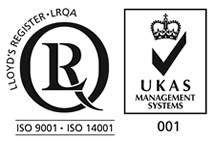
Main Products
Copyright 1998-2025 Firmetal Group All Rights Reserved. | Sitemap
Pure tantalum has good plasticity, low deformation resistance and a relatively low work hardening rate. Various profiles and special-shaped parts can be produced by plastic processing methods. Pure tantalum can be rolled into plates, strips, foils, tubes and bars at room temperature, with a processing rate of over 90%. To reduce oxidation, plastic processing of pure tantalum is often carried out at room temperature or below 500℃. Due to its high strength and poor plasticity of ingots, tantalum alloys must first be billet at a temperature above 1200℃, and the subsequent processing techniques are the same as those for pure tantalum. The extrusion ratio for billet opening should be greater than 4, and the forging ratio should be greater than 2. When heating and opening the billet, it is necessary to prevent gas contamination that may cause a decrease in the material's plasticity. To ensure that the product has good stamping and spinning performance, cross rolling should be used. The processing rate before cross-rolling should be maintained at around 80%. Tantalum plates can be made into various shapes of parts such as cups, caps, tubes, cones and nozzles through spinning and deep drawing. The diameter of the rotary forging bar used for wire drawing is generally 2.5 millimeters. Because tantalum is soft and prone to adhering to the mold and scratching the surface, when drawing wire, the surface of the wire is first anodized to form an oxide film and then lubricated with beeswax.
Tantalum and its alloy billets can be produced by powder metallurgy process or smelting process. Powder metallurgy technology is mostly used for the production of small tantalum products and billets for processing. The powdered tantalum raw materials obtained by thermal reduction or electrolysis are pressed into shape and then vacuum sintered. The sintering process depends on the usage requirements of the product. One-time sintering (1600-2200℃) is used for the production of electrodes for smelting and porous anodes. Secondary sintering is used to produce billets for plastic processing such as forging, rolling and drawing. Forging or rolling is often carried out between two sintering processes, with a processing rate of approximately 50%. The secondary sintering temperature is 2000 to 2700℃.